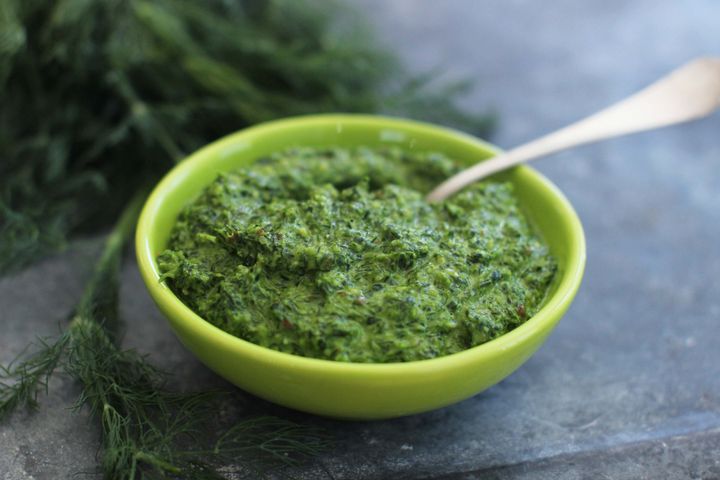
We’ve written before at HuffPost UK about the one Italian seasoning Italians actually eat, as well as the secret ingredient which some add for a perfectly balanced pasta sauce.
If you’ve ever tried to make your own pesto at home, you might have wondered whether there’s another such secret for restaurant-worthy paste ― how come my homemade version always tastes so, well, lacking?
According to recipe and cooking technique educator Trigg Ferrano, who specialises in Italian food, there is actually a trick that’s hidden in pesto’s name.
Which is?
If you add the exact right amount of each component to your blender but are still left with an “underwhelming green slime,” you’re likely processing the ingredients wrong, Trigg says.
“You failed because pesto technically isn’t a sauce,” he added. “It’s a technique.”
The word “pesto” comes from “pestare,” which actually means “to pound” or “to crush” in Italian. I guess it’s a bit like a “fry-up” ― the technique and the food have become intertwined.
Because of this, you’ll need a mortar and pestle to do the job in its traditional form, Trigg explains.
Otherwise, he says you’re “making blend-o, not pesto”.
A blender slices, rather than crushes, ingredients. “If it doesn’t sound like that makes much of a difference, think about slicing your hand versus crushing it,” he adds.
Culinary site Serious Eats agrees.
After trying out a whole range of pesto prep, they found a mortar and pestle “creates a luxurious sauce with a rich, deep flavour and a beautiful, silky texture that’s superior to what a food processor can do”.
Of course, not every Italian has time for the task ― a New York Times writer who visited their friend’s then-73-year-old mother-in-law in Italy apparently heard that “no one makes pesto like this anymore.”
Still, she continued: “I prefer the mortar. It enhances the scent of the basil and garlic.” She sticks to the traditional method most of the time, she added.
Why are they different?
It’s partly a question of emulsification.
The more traditional method crushes the ingredients, many of which (like basil and pine nuts) are quite “hard” and struggle to incorporate into one another.
When you crush those, though, their cell walls break down and they release oils, making the whole mixture more flavourful, creamy, and smooth.
Serious Eats found that the food processor option was a little gritty, while the pestle and mortar method took more work, but yielded better results.
They recommend bashing and rotating the pestle as you mash the mix for the perfect pesto. And for what it’s worth, they found that a marble mortar and wooden pestle were the best tools for the job.
These are the ones Italians have traditionally used for the job.